1 Provenience. The 116 pieces scored during 1999 make up 1.3% of our 8813-piece grand total (Table A1.1, site 5). The material was recovered from Layers 7-22, with most originating in Layers 10 and 22. Excavation years range from 1984 to 1997. Stratigraphic comparisons for species, age, maximal length, and human and carnivore processing produced no statistically significant differences. Hence, we have pooled the assemblage and treat it as a single temporal unit. In July 2006 we informally examined some faunal remains as they were being cleaned and labeled by student helpers. We noted an especially strong presence of hyena, perhaps because the material was being excavated from the very rear of the cave; however, we made no quantitative observations.
2 Species. For the 116 Denisova pieces, the most commonly identified groups are: indeterminable (74.1%), goat-sheep (7.8%), and horse (5.2%) (Table A1.2, site 5). Compared with the pooled assemblage averages, Denisova has fewer bear, big mammal, hyena, mammoth, and reindeer, and twice the number of indeterminable pieces (Table A1.2, site 4).
Our project did not study bat bones, but they have been found in Denisova Cave. Their use of caves is generally regarded as a sign of human absence (Ovodov 1974).
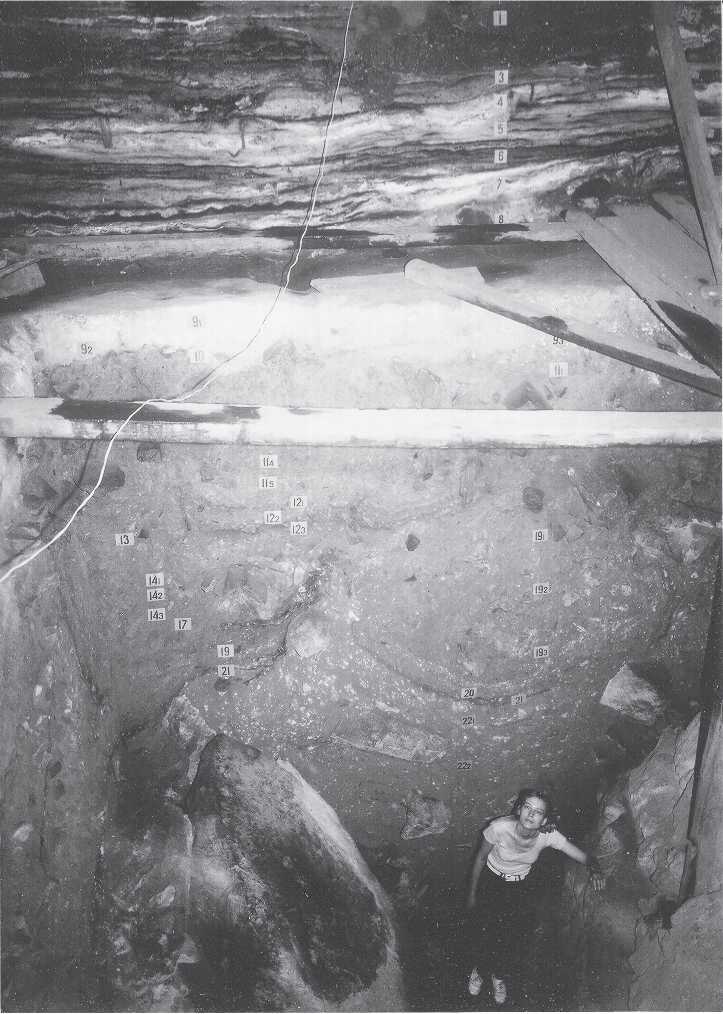
Fig. 3.10 Deepest horizon in Denisova Cave. A young student stands in the cave’s deepest level. The
Marked difference between Holocene and Pleistocene deposition is clearly evident in this view. Twenty-two levels have been identified (CGT color Denisova 7-14-99:6).
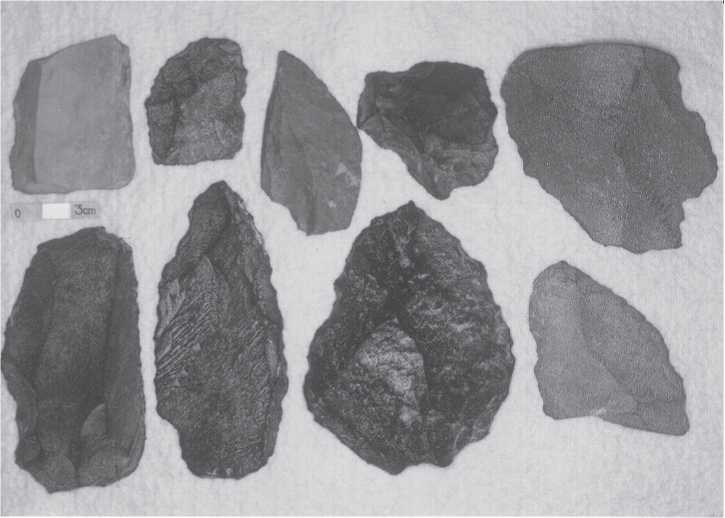
Fig. 3.11 Denisova Cave Mousterian artifacts. Cores, Levallois and irregular-shaped pieces from Layer 14.
Unifacial objects such as these would have been responsible for the cut marks found on various pieces of stratigraphically associated animal bone. Scale is 3.0 cm (CGT color IHPP 6-2-87:17).
3 Skeletal elements. The most commonly recognized groups in the 116-piece Denisova assemblage are long bones (37.9%), unknown (22.4%), metapodials (8.6%), ribs (7.8%), and foot bones (3.4%). Compared with the pooled assemblage averages, Denisova has fewer mandibles, vertebrae, humeri, toes, and twice the number of long bones (Table A1.3, site 5).
4 Age. Only one (0.9%) of the 116 Denisovapieces belongs to a sub-adult (Table A1.4, site 5). This low frequency of sub-adult pieces is several times less than the average for the pooled assemblage.
5 Completeness. Completeness (and size) influences to a large degree the ability to identify species, skeletal elements, and age. The 116 Denisova pieces are very incomplete: whole (6.0%), one anatomical end (7.8%), no anatomical ends (86.2%) (Table A1.5, site 5). The pooled assemblage averages show much more completeness.
6 Maximum size. The mean size of the 116 Denisova pieces is 5.2 cm; the range is 2.3 cm to 13.8 cm (Table A1.6, site 5). Compared to the pooled assemblage mean and range, it is clear that there has been marked bone processing and piece size reduction in Denisova. Looking at the whole long bone lengths of goat-sheep and horse provided by Vera I. Gromova (1950: table 27) shows that the Denisova upper range limit is much smaller than her values.
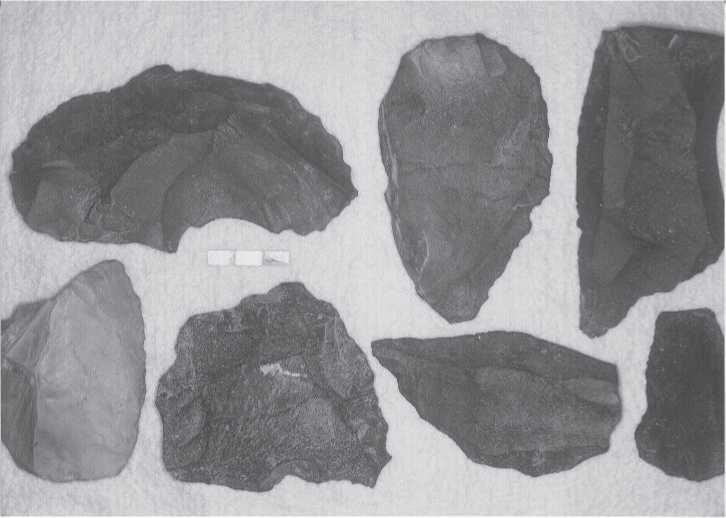
Fig. 3.12 Denisova Cave Mousterian artifacts. Stone artifacts from Layer 19. Scale is 3.0 cm (CGT color IHPP 6-2-87:10).
7 Damage shape. No observations were made on damage form in the Denisova sample, because at the time of our study we were still formulating the definitions.
8 Color. Out of 116 Denisova pieces, 94.8% are ivory colored, and 5.2% are brown. None are black (burned) (Table A1.8, site 5). Compared with the pooled assemblage, Denisova has more ivory colored, and fewer brown colored pieces.
9 Preservation. All 116 Denisovapieces are ivory hard (Table A1.9, site 5). The pooled assemblage has chalky pieces. Preservation is excellent at Denisova Cave.
10 Perimortem breakage. Most of the 116 Denisova pieces have perimortem breakage (96.5%) (Table A1.10, site 5). This frequency is greater than the pooled assemblage average.
11 Postmortem breakage. The frequency (18.3%) of postmortem breakage in the 116 Denisova pieces is nearly identical to the pooled assemblage average (Table A1.11, site 5).
12 End-hollowing. Out of 115 Denisova pieces, only 2.6% have end-hollowing (Table A1.12, site 5). This frequency is about one-third of the pooled assemblage average, and less than that seen in Razboinich’ya (8.1%) and Maly Yaloman (9.5%). We attribute the low frequency of end-hollowing to the simple fact that there are very few pieces with ends, as indicated by the mean maximum piece diameter.
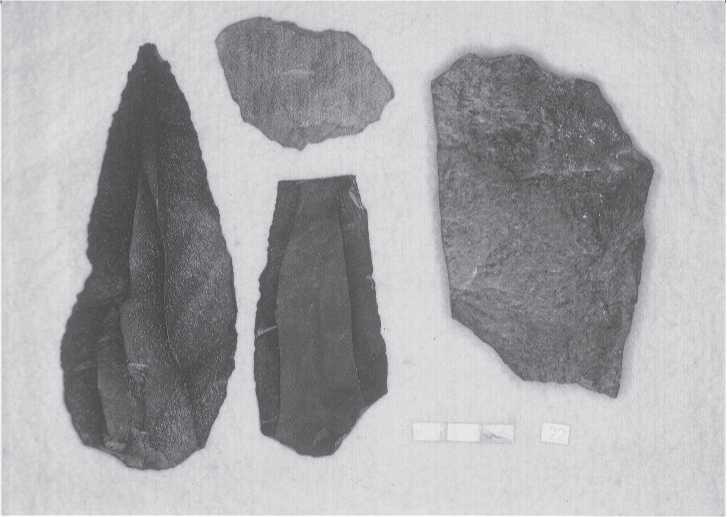
Fig. 3.13 Denisova Cave Mousterian artifacts. Specimens from Layer 22 show Levallois manufacturing technique. Scale is 3.0 cm (CGT color IHPP 6-1-87:9).
13 Notching. Out of 115 Denisovapieces, 22.6% have 1-6notches(TableA1.13, site5). One notch per notched piece is the most common condition. The Denisova frequency is greater than the pooled assemblage average (14.6%). It is very similar to the amount of notching found at Razboinich’ya (23.6%) and Maly Yaloman (23.0%). Because of this frequency of notching, as well as other damage characteristics, we feel that Denisova was used rather commonly by large carnivores.
14 Tooth scratches. Denisova’s 115 pieces have fTom one to more than seven scratches in 20.9% of the assemblage (Table A1.14, site 5). Two scratches per piece is the most common number. The pooled assemblage average is almost exactly the same. Both Razboinich’ya (37.1%) and Maly Yaloman (28.6%) have more pieces with tooth scratches.
15 Tooth dints. Out of 115 Denisovapieces, 22.6% have dinting (Table A1.15, site 5). The most common number is one dint per piece. Compared to the pooled assemblage average, Denisova has slightly fewer dinted pieces. Razboinich’ya has more than twice the number of dinted pieces (52.8%), while Maly Yaloman has 32.6%.
16 Pseudo-cuts. Our 115 Denisova pieces have a very high frequency of pseudo-cuts (28.6%) (Table A1.16, site 5). This value is so out of line with the pooled assemblage average, and those of Razboinich’ya (3.1%) and Maly Yaloman (6.3%), that two
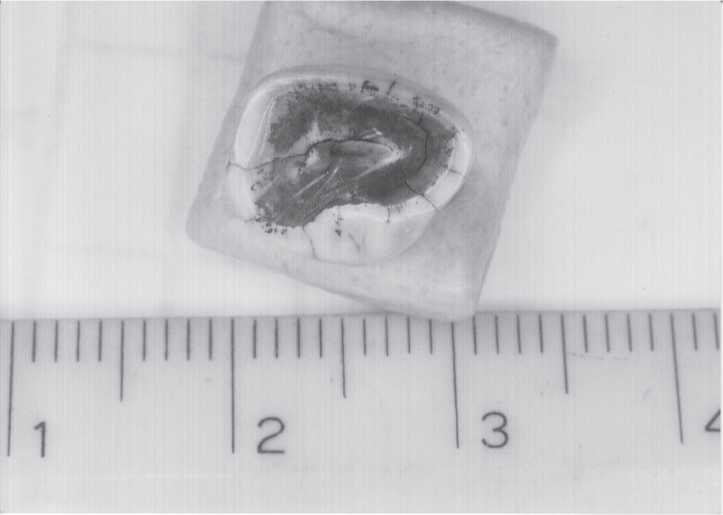
Fig. 3.14 Denisova Cave human incisor (occlusal view). This view of an adult upper left central incisor shows that much of the crown had worn off before death. Secondary dentine fills the exposed pulp chamber. Rounding and polishing of the enamel suggests this tooth may have been partly digested by a hyena. There is no indication of labial surface flattening, lingual shoveling, or double-shoveling that might be expected had this person (sex indeterminable) been genetically affiliated with East Asian populations. Robustness favors a Neanderthal affiliation rather than anatomically modern humans. There is no pathology. Found in 1984 section D7, 119-220 cm deep (CGT color Moscow 6-25-87:20).
Possibilities must be considered. First, it is possible that our scoring 33 pieces as having pseudo-cuts is grossly incorrect. Using the pooled assemblage average as a rough expectation value, there should be only five or six Denisova pieces with pseudo-cuts. Second, since we are unable to distinguish pseudo-cuts from stone tool cut marks, it could be that we were influenced by the presence of carnivore tooth scratches, dints, notching, and/or end-hollowing on the piece. A comparison of pieces with pseudo-cuts and carnivore damage vs. pieces with pseudo-cuts but no carnivore damage showed that there were 30 pieces with pseudo-cuts and carnivore damage vs. three without carnivore damage. Denisova pseudo-cuts are strongly related with carnivore damage to bone (dints, scratches, polishing, notching). Nevertheless, the high Denisova pseudo-cut frequency is disturbingly out of line with our other assemblages.
17 Abrasions. The Denisova sample of 115 pieces has 3.5% with abrasions (Table A1.17, site 5). Most have more than seven striations per piece. This is somewhat more than the average for the pooled assemblage. The abundance of limestone spall from the
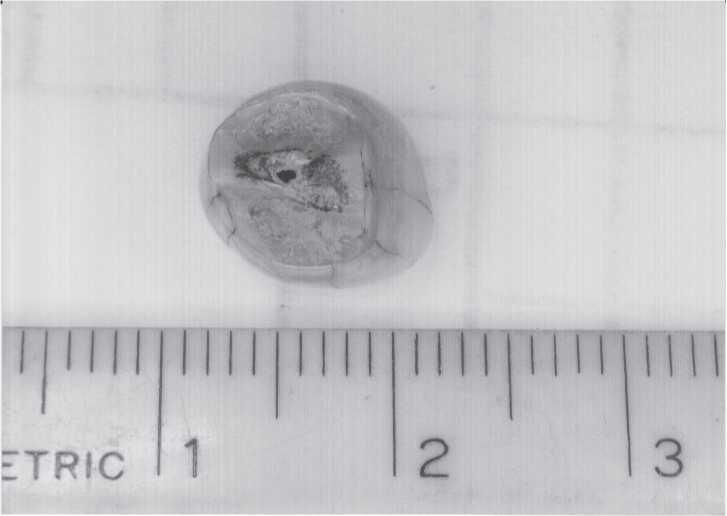
Fig. 3.15 Denisova Cave Neanderthal incisor (root end). This view of the tooth from Fig. 3.14 is
Included to show the rounding and polishing of the surface where the root had broken off. This polishing of hard dentine where none should exist additionally suggests the tooth had been swallowed by a hyena and partly dissolved, like so many bone fragments and teeth from these Pleistocene Altai caves (CGT color Moscow 6-25-87:21).
Cave ceiling suggests that at-hand stone was used a little more frequently for bone smashing than for our grand total.
18 Polishing. Denisova has a relatively high occurrence of polishing (83.0%; 93/112 pieces) (Table A1.18, site 5). Polishing is more frequent in Denisova than in the pooled assemblage, Razboinich’ya (60.0%), and only slightly less than in Maly Yaloman (89.3%). Here, as with notching, carnivore presence must have been extensive.
19 Embedded fragments. Only 83 Denisova pieces could be scored for embedding, and only 1.2% have the condition (Table A1.19, site 5). This frequency is less than the pooled assemblage average, much less than Razboinich’ya (8.8%), but similar to Maly Yaloman (2.3%).
20 Tooth wear. Only two Denisova teeth could be scored for wear. Both belonged to adults.
21 Acid erosion. Out of 115 Denisova pieces, 2.6% showed acid erosion (Table A1.21, site 5). This frequency is less than the pooled assemblage average, Razboinich’ya (7.3%), and much less than Maly Yaloman (48.0%). We consider the acid-eroded pieces in Denisova as documenting the use of the cave by hyenas, perhaps not as often or as long as in other Altai cave sites. The July 2006 visit turned up many pieces with acid erosion.
Most, at least 100 pieces, were less than 2.5 cm in length, so they would not meet our minimal size standard for formal study.
22-23 Rodent gnawing, insect damage.
The 115 Denisova pieces.
No cases of either variable were identified in
24 Human bone. A few human teeth and bone fragments have been found in Denisova Cave. They were stored separately from the fauna remains. In 1987 they were in Moscow on loan to Valery Alexeev. The remains will be discussed in Chapter 4. Here, we simply remark that tooth morphology and bone DNA indicate Neanderthals or Neanderthal-likes were the Paleolithic occupants of Denisova Cave.
25 Cut marks. One-fifth (20.0%) of the 115 Denisova pieces have fTom one to more than seven cut marks. The most common number is one (Table A1.25, site 5). Compared with the pooled assemblage average (7.6%), Denisova has more than twice the number of pieces with cut marks. In fact, Denisova is one of our five or so assemblages with more than 15% cut pieces.
26 Chop marks. As for cut marks, Denisova has a high frequency of chop marks (22.7%) (Table A1.26, site 5). This is five times greater than the pooled assemblage average (5.4%). The Denisova chopping frequency is exceeded only by one other assemblage - Kurla I (30.6%).




 World History
World History









